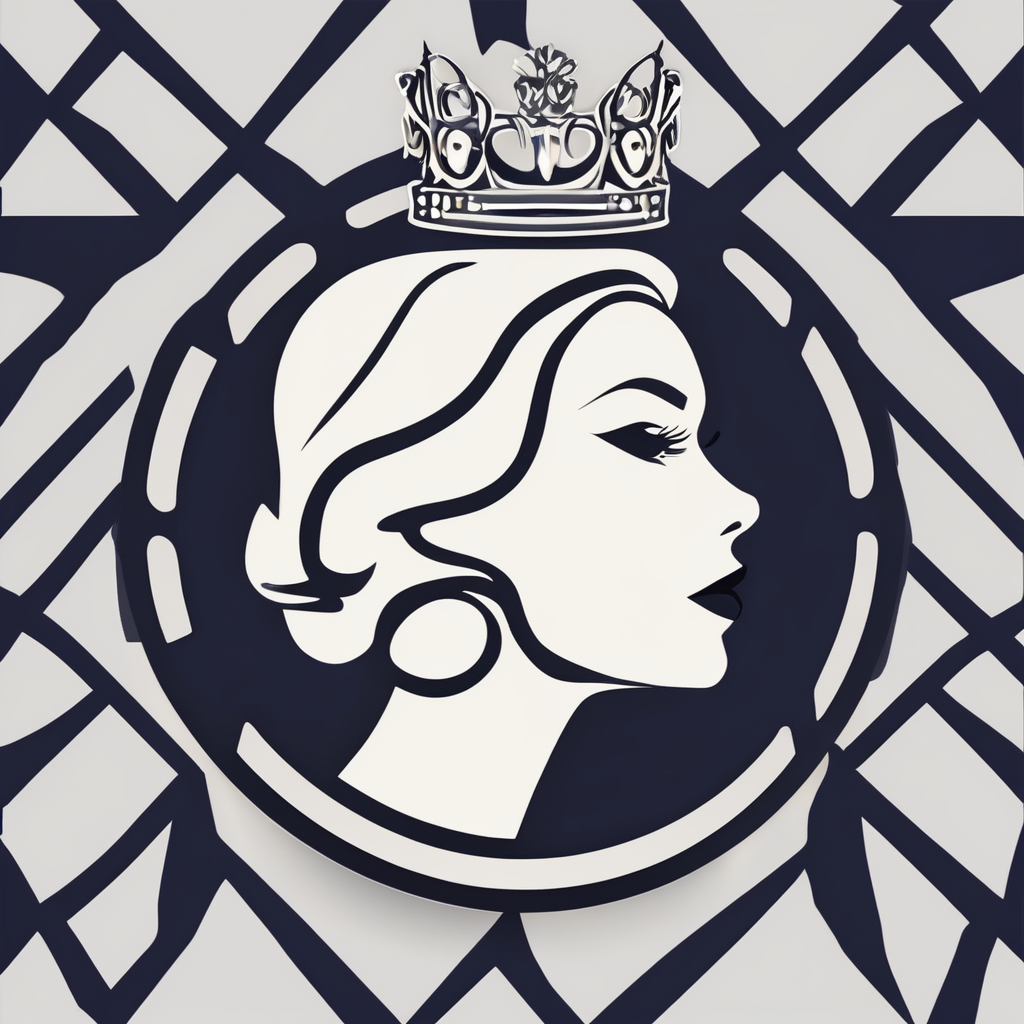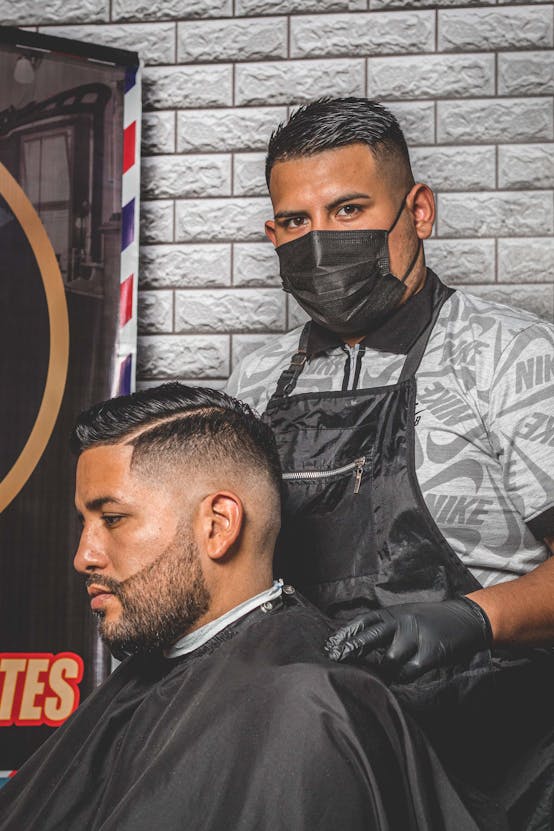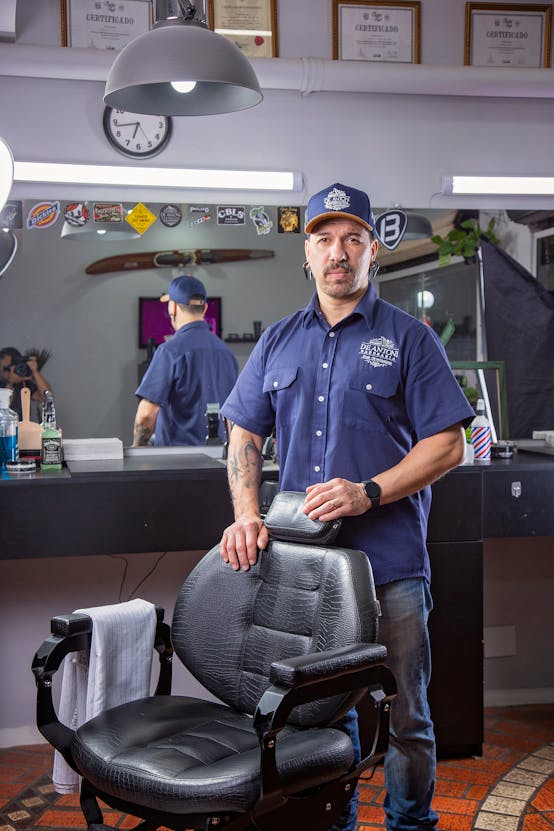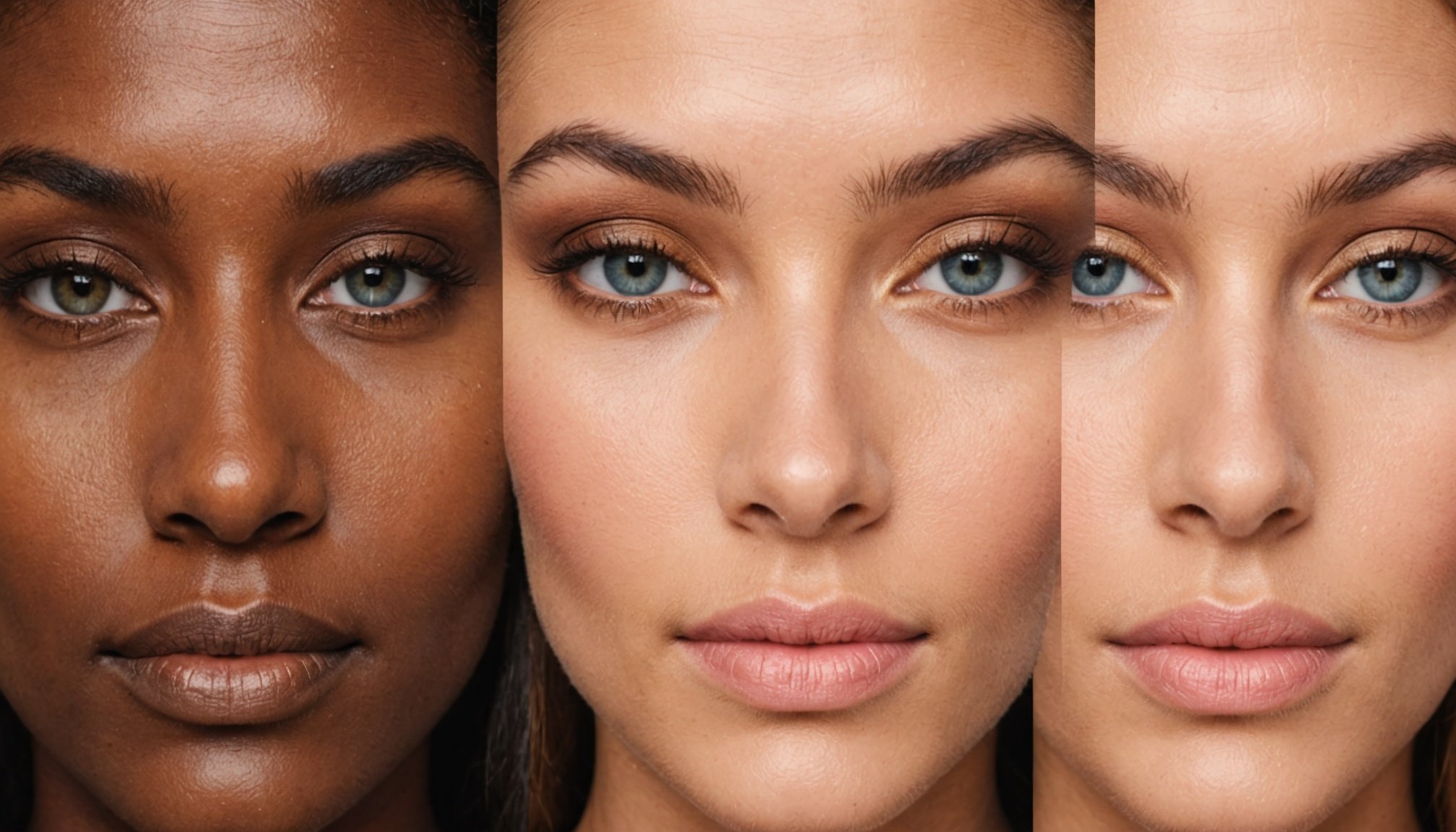Under-eye circles can be frustrating, affecting your confidence and appearance. Fortunately, mastering color correction techniques can transform your look with ease. This guide breaks down effective strategies to conceal these dark circles, enhancing your natural beauty. From choosing the right shades to applying makeup like a pro, you’ll discover practical tips to achieve a refreshed, radiant appearance. Say goodbye to tired eyes and hello to a revitalized you!
Understanding Under-Eye Circles
Under-eye circles are a common concern for many, impacting one's overall appearance and confidence. The causes of under-eye circles can vary widely, often influenced by factors such as genetics, age, and lifestyle. For some, skin types play a significant role; those with thinner skin may notice these circles more prominently due to the visibility of blood vessels beneath the surface.
This might interest you : Stylish Tips for Rocking Patterned Tights: Your Guide to Chic Autumn Fashion
Different skin types react differently, with dry skin potentially exacerbating the appearance of darkness due to lack of moisture. Oily skin, on the other hand, might mask some of the visibility but can lead to other issues like puffiness. Understanding your skin type is crucial in selecting the right skincare products to address these concerns effectively.
The importance of skincare cannot be overstated when it comes to mitigating under-eye circles. A consistent skincare routine that includes hydrating creams and sun protection can significantly reduce the appearance of these circles over time. Ingredients like hyaluronic acid and vitamin C are beneficial in brightening and firming the delicate skin under the eyes. By tailoring skincare routines to individual needs, one can achieve noticeable improvements and maintain healthier-looking skin.
In the same genre : Winter Wedding Glam: Creative Ways to Style Your Maxi Dress in the UK
The Basics of Color Theory
Understanding color theory is essential in effectively concealing under-eye circles. At the heart of this theory is the color wheel, a tool that illustrates the relationships between colors. The color wheel is divided into primary, secondary, and tertiary colors, each playing a unique role in color correction.
Complementary colors, which are located opposite each other on the color wheel, are particularly useful in color correction. For example, to neutralize the blue or purple hues of under-eye circles, one would use an orange or peach-toned concealer. This is because orange and blue are complementary colors, and when combined, they cancel each other out, creating a more even skin tone.
When applying color correction to under-eye circles, it's crucial to select the right shade based on your skin tone and the color of the circles. Fair skin tones may benefit from lighter peach shades, while deeper skin tones might require richer orange hues. By mastering these basics of color theory, individuals can achieve a more natural and flawless appearance, effectively diminishing the visibility of under-eye circles.
Choosing the Right Products
Selecting the appropriate makeup products is crucial for effectively concealing under-eye circles. Two primary options are concealers and color correctors. While both serve to hide imperfections, they function differently. Concealers are designed to match your skin tone and provide coverage, whereas color correctors neutralize specific hues, such as the blue or purple tones of under-eye circles.
When choosing concealers, look for products that contain hydrating ingredients like hyaluronic acid to prevent dryness and creasing. For color correctors, seek out those with a creamy texture for easy blending. Key ingredients, such as vitamin C, can also help brighten the area over time.
Some top-rated products include:
- NARS Radiant Creamy Concealer: Known for its buildable coverage and smooth finish.
- L.A. Girl Pro Conceal HD Concealer: Offers a range of color correctors for different skin tones.
- Tarte Shape Tape Concealer: Provides full coverage with a matte finish, ideal for long-lasting wear.
By understanding the differences and key ingredients, you can select the best products to achieve a flawless look and effectively diminish the appearance of under-eye circles.
Color Correction Techniques
Mastering color correction techniques is essential for effectively concealing under-eye circles. Begin by selecting a color corrector that complements the hue of your circles. Application methods play a crucial role in achieving a natural look.
Step-by-Step Guide for Applying Color Corrector
-
Preparation: Start with a clean, moisturized face. Apply a lightweight eye cream to ensure the under-eye area is hydrated.
-
Application: Using a small brush or your fingertip, gently apply the color corrector to the darkest areas of your under-eye circles. It's essential to use a light hand to avoid caking.
-
Blending Techniques: For a seamless finish, blend the corrector with a damp makeup sponge or a soft brush. Tap gently to merge the product with your skin, avoiding harsh lines.
Common Mistakes to Avoid
- Over-application: Applying too much product can lead to creasing and an unnatural appearance.
- Wrong Shade: Choosing the incorrect shade can accentuate rather than neutralize the circles.
- Poor Blending: Failing to blend thoroughly can leave visible lines and uneven texture.
By following these makeup tips and avoiding common pitfalls, you can enhance your under-eye area with confidence.
Application Techniques for Beginners
Navigating the world of makeup can be daunting for beginners, but mastering application techniques can make a significant difference. To start, gather essential tools: a makeup sponge, a soft brush, and your chosen color corrector and concealer. These tools are crucial for achieving a seamless finish.
Hands-on Techniques for Beginners
Begin with a clean, moisturized face to ensure your makeup adheres properly. Use a makeup sponge to apply a small amount of color corrector to areas needing coverage. This tool helps blend the product evenly, avoiding harsh lines. Next, apply concealer with a soft brush, using gentle strokes to layer it over the corrector. This method ensures a natural look, crucial for beginners aiming for subtlety.
Tips for Creating a Natural Look
For a flawless finish, remember these key tips:
- Less is more: Start with minimal product and build up as needed.
- Blend thoroughly: Use a damp sponge to merge products seamlessly with your skin.
- Set with powder: Lightly dust a translucent powder to keep everything in place.
By following this beginners guide, you'll develop confidence in your makeup application skills, enhancing your under-eye area effortlessly.
Advanced Techniques for Experienced Users
For those familiar with makeup, mastering advanced techniques can elevate your under-eye concealing skills. One effective method is layering products. Start with a thin layer of color corrector, followed by a concealer that matches your skin tone. This technique ensures maximum coverage and a natural finish. Allow each layer to set before applying the next to prevent creasing.
Customizing shades is another crucial aspect. Professional application often involves mixing concealers to create a bespoke shade that perfectly matches your skin tone. This customization can address varying undertones and adapt to changes in skin colour throughout the year.
For long-lasting wear, set your makeup with a finely milled translucent powder. This step locks in the product, reducing the risk of smudging or fading. Consider using a setting spray for additional longevity, especially in humid conditions.
Expert tips include using a small, dense brush to apply concealer precisely where needed, and a damp sponge to blend seamlessly. These tools help achieve a polished look, enhancing the effectiveness of your makeup routine. By incorporating these advanced techniques, experienced users can refine their skills and achieve professional results.
Visual Examples and Tutorials
Visual examples and makeup tutorials are invaluable for mastering the art of concealing under-eye circles. They provide a step-by-step guide, making complex techniques accessible and understandable. For those new to makeup, these resources demystify the process, showing exactly how to apply products for optimal results.
The Importance of Visual Aids
Visual aids are crucial in learning because they offer a clear representation of techniques. Seeing a before and after transformation can be particularly enlightening. It helps viewers grasp the impact of correct application and the potential improvements achievable with the right products and methods.
Breakdown of Successful Tutorials
Successful makeup tutorials typically follow a structured approach. They begin with an overview of necessary tools and products, followed by a detailed demonstration of each step. Look for tutorials that focus on blending techniques and product layering, as these are key to achieving a natural finish.
Before and After Examples
Before and after images are powerful. They visually demonstrate the effectiveness of techniques and products. Such examples can motivate learners by showing the potential results of consistent practice and application. By incorporating these visual aids, individuals can enhance their makeup skills and achieve desired outcomes with confidence.
Skin Tone Considerations
Understanding your skin tone is essential in selecting the right products and techniques for concealing under-eye circles. To determine your skin tone, examine the veins on your wrist: blue or purple veins suggest a cool undertone, while green veins indicate a warm undertone. Neutral undertones may show a mix of both.
Best Shades for Various Skin Tones
Choosing the best shades involves a personalized approach. For fair skin tones, opt for light peach or pink correctors to neutralize blue hues. Medium skin tones benefit from deeper peach or orange shades, while dark skin tones may require rich orange or red correctors. Matching products to your specific skin tone ensures a natural and effective result.
Adapting Techniques Based on Skin Undertones
Techniques should also adapt to your skin undertones. Cool undertones pair well with pink-based concealers, while warm undertones suit yellow or golden hues. For neutral undertones, a balanced shade works best. Adjusting application methods, like layering and blending, according to undertones enhances the overall effect. By understanding and applying these considerations, you can achieve a flawless, natural look tailored to your unique skin tone.
The Psychology of Color
Understanding the psychology of color can significantly enhance your makeup application skills, particularly when concealing under-eye circles. Colors can evoke various emotional responses and influence our perception of an individual's appearance. For instance, warm tones like peach and orange can create a sense of warmth and vitality, effectively brightening the under-eye area.
Emotional Impact of Color
Colors have a profound emotional impact. In makeup, they can convey moods and feelings. For example, using cooler tones like blue might evoke calmness but can also highlight under-eye circles if not used correctly. Conversely, warmer colors can make the skin appear healthier and more vibrant.
Perception and Color Choices
Color choices in makeup can alter how others perceive us. Opting for the right shades can enhance features and create a balanced look. For under-eye circles, selecting complementary colors can neutralize unwanted hues, improving overall facial harmony.
Practical Applications
Incorporating the psychology of color into your makeup routine involves choosing shades that not only conceal but also enhance your natural beauty. By understanding how colors affect emotions and perceptions, you can make informed decisions that boost confidence and create a desired look.
Maintenance and Care for Under-Eye Skin
Caring for the delicate under-eye area is crucial in maintaining a youthful appearance. A consistent under-eye care routine can significantly improve skin texture and reduce the visibility of circles.
Importance of an Under-Eye Skincare Routine
An effective skincare routine involves gentle cleansing, hydration, and protection. Start with a mild cleanser to remove impurities without stripping natural oils. Follow with a hydrating eye cream containing ingredients like hyaluronic acid or peptides to plump and smooth the skin.
Products That Can Help Improve Skin Texture
Incorporating targeted products can enhance your routine. Look for serums with retinol to boost collagen production and reduce fine lines. Antioxidant-rich creams, such as those with vitamin C, can brighten and firm the under-eye area. These products support skin renewal and maintain a healthy appearance.
Tips for Maintaining a Youthful Appearance Under the Eyes
To maintain youthful eyes, protect the area with a broad-spectrum sunscreen daily. This prevents sun damage, which can exacerbate aging signs. Additionally, ensure adequate sleep and hydration to support skin health. By following these under-eye care tips, you can preserve the skin's vitality and appearance.













